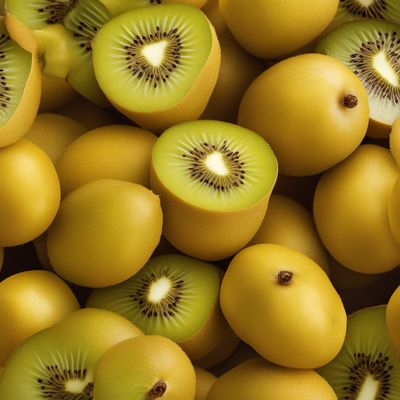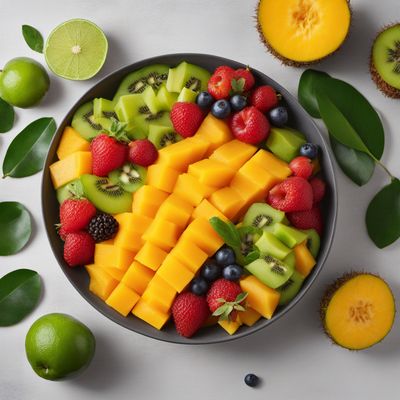
Ingredient
Kiwi fruits (green, red, yellow)
The Vibrant Delight of Kiwi Fruits
Kiwi fruits have a fuzzy brown exterior and vibrant green, red, or yellow flesh with tiny black seeds. They have a tangy and sweet flavor with a hint of tropical notes, and their texture is soft and juicy. Kiwi fruits are known for their high vitamin C content and are often enjoyed raw or used in salads, desserts, smoothies, and marinades.
Origins and history
Kiwi fruits are native to China and were originally known as Chinese gooseberries. They were later introduced to New Zealand, where they were cultivated and renamed as kiwi fruits due to their resemblance to the kiwi bird. Kiwi fruits gained popularity in the 20th century and are now grown in various countries around the world. They are widely enjoyed for their unique taste and nutritional benefits.
Nutritional information
Kiwi fruits are a rich source of vitamin C, vitamin K, and dietary fiber. They also contain antioxidants and minerals like potassium and folate. With their low calorie and high nutrient content, kiwi fruits are a healthy addition to any diet.
How to select
When selecting kiwi fruits, choose ones that are firm but slightly yielding to gentle pressure. Avoid fruits that are overly soft or have wrinkled skin. The skin should be smooth and free from blemishes. Additionally, the fruit should have a pleasant aroma. Ripe kiwi fruits can be stored in the refrigerator for up to one week.
Storage recommendations
To store kiwi fruits, keep them in the refrigerator to maintain their freshness. If the fruits are not fully ripe, they can be left at room temperature to ripen. Once ripe, they should be consumed within a few days. To extend their shelf life, kiwi fruits can be peeled, sliced, and frozen for later use in smoothies or desserts.
How to produce
Kiwi fruits can be grown in home gardens or containers. They require well-drained soil and a sunny location. Kiwi vines are dioecious, meaning they have separate male and female plants. To produce fruit, both male and female plants are needed. Kiwi fruits can be grown from seeds or propagated from cuttings or nursery-bought plants.
Preparation tips
Kiwi fruits can be enjoyed fresh by simply peeling and eating them as a snack. They can also be sliced and added to fruit salads, used as a topping for yogurt or cereal, or blended into smoothies. Kiwi fruits can be used in both sweet and savory dishes, adding a refreshing and tangy flavor. They pair well with other tropical fruits, citrus, and creamy ingredients like yogurt or ice cream.
Culinary uses
Kiwi fruits are commonly used in a variety of dishes and cuisines worldwide. They are often used in fruit salads, desserts like pavlova or fruit tarts, and smoothies. Kiwi fruits are also used in savory dishes like salads, salsas, and marinades. They are popular in New Zealand, China, and other countries where they are cultivated.
Availability
New Zealand, China, Italy, United States




